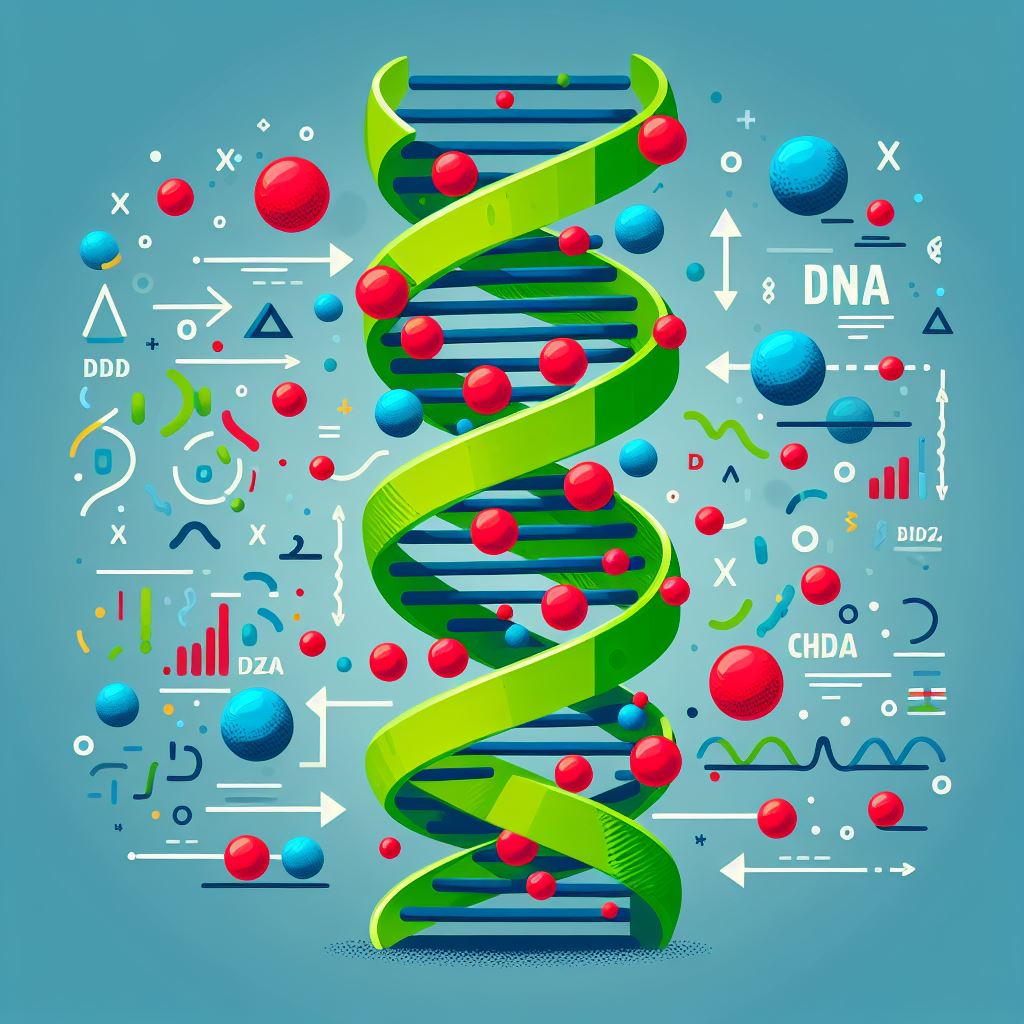Aging is a universal phenomenon that affects every living organism, but its underlying mechanisms remain one of the most intriguing mysteries of biology. From cellular senescence and genomic instability to mitochondrial dysfunction and stem cell exhaustion, these hallmarks of aging outline the intricate web of aging and highlight potential avenues for intervention.
Statistically, the global population aged 65 and over is projected to reach 1.5 billion by 2050, emphasizing the urgency of understanding and addressing the challenges of aging. By exploring these hallmarks, we aim to shed light on the fundamental processes that drive aging and pave the way for strategies that could enhance longevity and improve the quality of life in our later years.
What Do You Meant By Aging Hallmarks?
The term “aging hallmarks” refers to the key biological processes and features that characterize the aging process at a cellular and molecular level. These hallmarks provide a framework for understanding how aging occurs and why it leads to the decline in physiological functions over time.
What Are The Hallmarks Of Aging?

The hallmarks of aging are discussed in detail.
Cellular Senescence
Let’s start with cellular senescence, a fancy term for when cells basically decide to retire. Cells enter senescence when they can no longer divide. It’s like they’re hitting a natural pause button to prevent the risk of becoming cancerous. While this sounds good, too many senescent cells can lead to tissue damage and inflammation, contributing to aging.
Genomic Instability
Next up is genomic instability. Our DNA, the blueprint of our life, can get damaged from various sources like UV rays or just normal metabolic processes. When DNA damage accumulates, it can lead to mutations and malfunctioning cells. This instability is a core reason why our bodies show signs of aging as we get older.
Telomere Attrition
Imagine telomeres as the plastic tips on shoelaces that prevent them from fraying. Telomeres protect our chromosomes, but every time a cell divides, these tips get a little shorter. Eventually, they become too short to protect the chromosomes effectively, leading to cell death or dysfunction, a major contributor to aging.
Epigenetic Alterations
Epigenetic changes are like software updates for our genes – they don’t change the DNA sequence but alter how genes are expressed. Over time, these updates can lead to errors in gene expression, contributing to aging. Factors like diet, environment, and lifestyle can influence these epigenetic modifications.
Loss of Proteostasis
Proteostasis, or protein homeostasis, involves the balance of protein production, folding, and degradation. As we age, this balance gets disrupted, leading to the accumulation of misfolded or damaged proteins. This can cause cellular dysfunction and is linked to diseases like Alzheimer’s.
Deregulated Nutrient Sensing
Our cells have pathways that sense and respond to nutrients, which are crucial for maintaining energy balance. Key pathways include insulin/IGF-1, mTOR, and AMPK. With age, these pathways become less efficient, affecting metabolism and promoting age-related diseases.
Mitochondrial Dysfunction
Mitochondria are the powerhouses of our cells, producing the energy we need to function. As we age, mitochondrial efficiency declines, leading to less energy production and more oxidative stress, damaging cells and tissues.
Stem Cell Exhaustion
Stem cells are our body’s repair system, capable of becoming various cell types. Over time, these cells get exhausted and lose their regenerative capacity, leading to impaired tissue repair and maintenance, a hallmark of aging.
Altered Intercellular Communication
Cells constantly communicate with each other through signals. With age, this communication becomes less effective, leading to a breakdown in coordination and function. This can contribute to inflammation and other age-related issues.
Inflammation
Chronic inflammation, often referred to as inflammaging, is a persistent, low-level inflammation associated with aging. It can lead to various age-related diseases like cardiovascular disease, diabetes, and arthritis.
Extracellular Matrix Stiffening
The extracellular matrix (ECM) is the scaffold that supports our tissues. Over time, the ECM can become stiff and less elastic, affecting tissue function and contributing to age-related issues like skin wrinkles and reduced organ function.
Metabolic Changes
As we age, our metabolism slows down. This change can lead to increased fat accumulation, decreased muscle mass, and a higher risk of metabolic diseases like diabetes and obesity.
Immune System Decline
Our immune system weakens with age, a process known as immunosenescence. This decline makes us more susceptible to infections, diseases, and less responsive to vaccinations.
How Can Certain Health Conditions Accelerate Aging?
Certain health conditions can accelerate the aging process. Chronic diseases and health conditions can impact the body in ways that exacerbate the biological mechanisms of aging, leading to premature aging and reduced lifespan. Here are some key examples:
Cardiovascular Diseases
Conditions such as hypertension, atherosclerosis, and heart disease can accelerate aging by increasing oxidative stress and inflammation, which damage cells and tissues over time.
Diabetes
Diabetes, particularly type 2 diabetes, can hasten aging by causing chronic high blood sugar levels, leading to glycation end products that damage proteins, DNA, and other molecules, and increasing the risk of cardiovascular disease and neuropathy.
Chronic Inflammation
Conditions like rheumatoid arthritis, inflammatory bowel disease, and chronic infections can lead to persistent inflammation. Chronic inflammation is a key driver of aging as it promotes cellular damage and dysfunction.
Obesity
Obesity is associated with various metabolic disturbances that accelerate aging, such as insulin resistance, increased inflammation, and higher levels of oxidative stress. It also raises the risk for other age-related diseases, like diabetes and cardiovascular conditions.
Chronic Kidney Disease
Kidney disease can lead to an accumulation of waste products in the blood, increasing inflammation and oxidative stress, both of which contribute to accelerated aging.
Neurodegenerative Diseases
Diseases such as Alzheimer’s and Parkinson’s accelerate aging by damaging neurons and other cells in the nervous system, leading to cognitive decline and physical debilitation.
Cancer
Cancer and its treatments (like chemotherapy and radiation) can cause significant cellular and DNA damage, leading to accelerated aging. Cancer survivors often experience increased fatigue, cognitive decline, and other signs of premature aging.
Pulmonary Diseases
Chronic obstructive pulmonary disease (COPD) and other chronic lung conditions can lead to increased oxidative stress and inflammation, contributing to faster aging of the respiratory system and other organs.
Can Aging Be Prevented Or Reversed?

Whether aging can be prevented or reversed is a topic of intense scientific research and debate. While aging is a natural and inevitable process, advances in biology and medicine reveal ways to slow it down and potentially mitigate its effects.
Prevention and Slowing Down Aging
-
- Lifestyle Choices: Adopting a healthy lifestyle can significantly impact the aging process. Regular physical activity, a balanced diet rich in fruits, vegetables, and whole grains, and avoiding smoking and excessive alcohol consumption are well-documented strategies for promoting longevity and reducing the risk of age-related diseases.
-
- Medical Interventions: Advances in medicine, such as the use of drugs like metformin and rapamycin, have shown promise in extending lifespan in animal models by influencing metabolic and cellular pathways associated with aging. Senolytic drugs, which target and eliminate senescent cells, are another area of active research with potential anti-aging benefits.
Reversing Aging
-
- Cellular Reprogramming: Scientists have made strides in reversing cellular aging through techniques like reprogramming cells to a more youthful state. This involves resetting the epigenetic markers of aged cells, essentially turning back the cellular clock.
-
- Gene Therapy: Gene editing technologies, such as CRISPR, offer potential for reversing certain aspects of aging by repairing or replacing damaged genes associated with age-related diseases.
-
- Regenerative Medicine: Stem cell therapy and tissue engineering aim to replace or repair damaged tissues and organs, thereby rejuvenating the body.
Current Limitations
While these approaches are promising, it is important to note that much of the research is still in its early stages, and many treatments have not yet been proven effective or safe for widespread use in humans. Additionally, the ethical and societal implications of extending the human lifespan must be carefully considered.
Read: Urine Proteomics As Acute Pancreatitis Biomarkers In Pediatrics
Conclusion
Hallmarks of aging, including genomic instability, telomere attrition, epigenetic alterations, and others, outline the biological underpinnings of aging and highlight potential targets for therapeutic intervention. While aging is a natural and inevitable process, scientific advancements are opening avenues for slowing it down and mitigating its effects.
Adopting healthy lifestyle choices, such as maintaining a balanced diet, engaging in regular physical activity, and avoiding harmful habits, can significantly impact the rate of aging. Medical interventions, including specific drugs and regenerative therapies, offer promising prospects for extending lifespan and enhancing health in older age.
Ultimately, while we may not yet be able to prevent or reverse aging entirely, ongoing research and advancements in medical science continue to bring us closer to the possibility of significantly improving the quality of life as we age. By addressing the hallmarks of aging and managing health conditions that exacerbate the aging process, we can pave the way for a healthier, more vibrant aging population.
